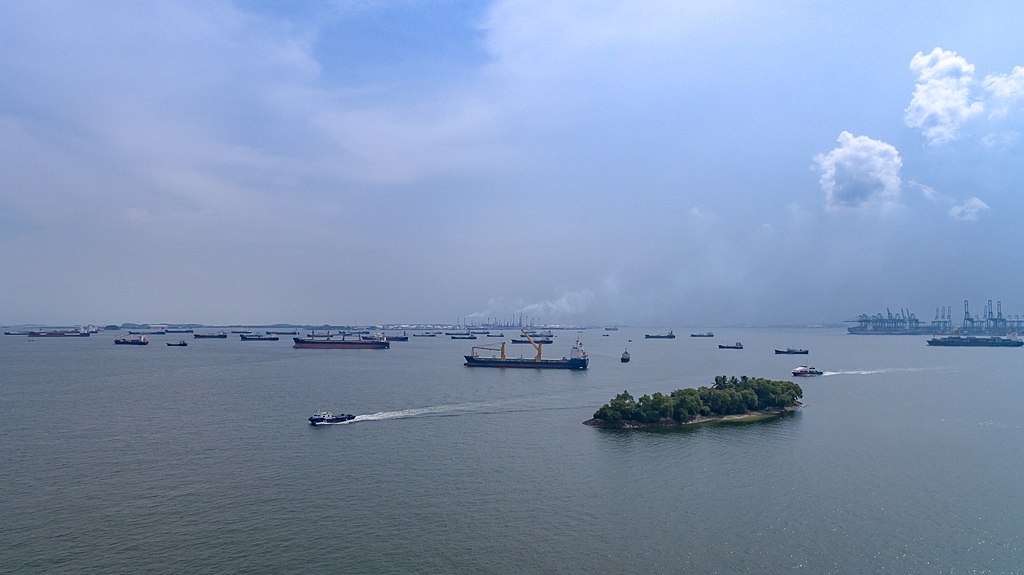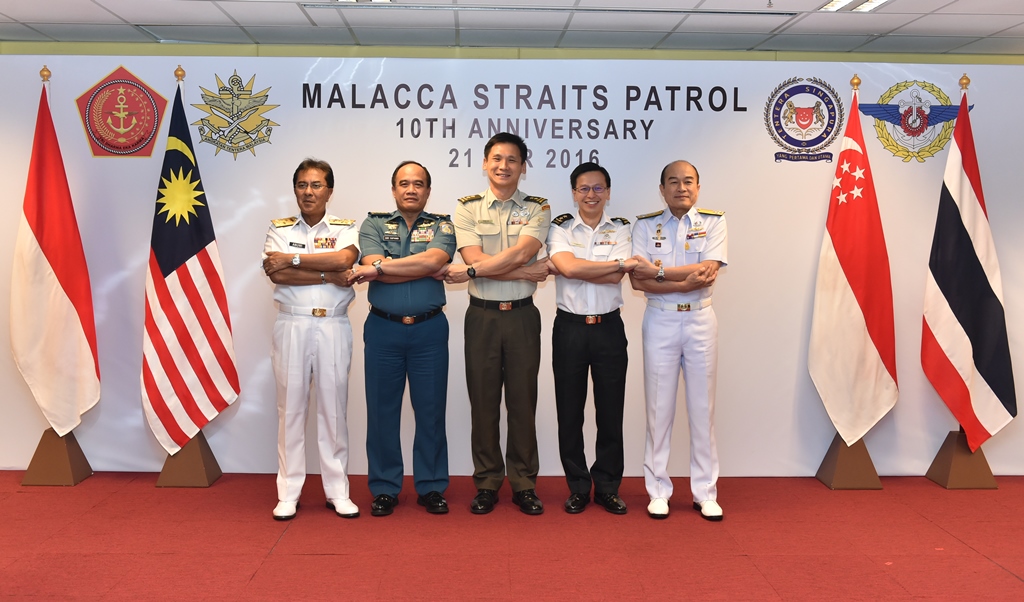Contrary to the prevailing opinion that piracy is a phenomenon of the past, it still is a severe and contemporary international security problem. Many researchers have tried to analyse this complicated and multifaceted phenomenon. This analytical report focuses specifically on the Malacca Strait and the situation in Southeast Asia, looking primarily at local piracy. The Strait is a crucial chokepoint of global trade, especially in the transportation of oil and liquefied natural gas (LNG). [9] The ongoing piracy is then not only actively putting a substantial portion of the World’s trade at risk, but also the region’s overall stability. Multilateral cooperation is therefore fundamental part of the search for a solution to this security threat.
The phenomenon of piracy carries political, economic, commercial, and security implications. Given its relevancy, even in a legal context, international law has struggled with a clear and efficient definition. That was finally stated within The United Nations Convention on the Law of the Sea (UNCLOS) Article 101 and piracy was defined as “any illegal acts of violence or detention, or any act of depredation, committed for private ends by the crew or the passengers of a private ship or a private aircraft, and directed: against another ship or aircraft, or against persons or property on board.” Therefore, the act itself must occur in international waters to be classified as piracy.
The Significance of the Malacca Strait
The Strait of Malacca lies in the Indian Ocean and constitutes the water strip separating the island of Sumatra, an integral part of the Indonesian archipelago, from the Malaysian peninsula. Over the years, it has been considered the link between the Andaman Sea, the Chinese Sea and the Singapore Strait.
Its geographical location clarifies its political and economic importance. Specifically, the Strait is fundamental for economic and cultural exchanges of the region’s states and is a hot topic concerning the region’s security. It is vital for the entire supply chain of Indochina and East Asia. The rapid growth of these two areas meant that the Strait had grown in importance. [13] Moreover, it is the main maritime trade route between the Asia-Pacific region, Europe and the Middle East. More than one-third of the world’s trade is estimated to pass through the Strait. However, in the case of the oil and natural gas trade, the proportion is even greater. The reason is that the Malacca Straits is a crucial passage for this type of commerce as it is the shortest route between Gulf oil producers, connecting the major countries in the Asia-Pacific region and the Middle East. [3]
When we talk about the Malacca Strait, we must also mention the geopolitics of the region, as it goes beyond the area’s borders and involves global players, such as the United States, India and China, which try to pursue their interests in the region. Moreover, the major trading powers are seriously concerned about the safety and control of the Strait as the vital transit route for global trade. [13] India, as a regional power, is concerned with the stability in the maritime neighbourhood and maintaining its direct influence. Similarly, the US wants to retain a non-conflict situation in the area. China is looking at the channel as a part of its maritime Silk Road. The risk of a blockade of the Strait is a severe threat with possible dramatic implications for regional and international trade. Any potential security compromise might be felt worldwide.

Piracy: Unveiling Threat to South-East Asia Security
Piracy in Southeast Asia was originally linked mainly to small criminal groups with limited means, robbing other small boats. However, nowadays, most ships affected by piracy are cargo and container ships and tankers carrying chemicals and oil. Many ships are diverted and their crews are seized and held for ransom. Pirates at times even hijack boats; they take control of a ship to steal its cargo or use the vessel for other illegal activities. The profits of such activities are then usually used as investments for further illegal actions and financing organized crime groups, involving multiple nations, which makes this issue a transnational problem.
Therefore, modern piracy in the Strait has not only become a severe concern but has also been a cause of chaos and instability in the region since 1990. Between late 1990 and early 2010, the Malacca Strait experienced a spike in piracy attacks. Between 1995 and 2013, 41 % of the world’s pirate attacks took place in South East Asia. [8] It is believed that the Asian financial crisis in 1997 caused political and economic instability, especially in Indonesia, which led local people to start looking for alternate means of income, such as piracy. [12]
Multilateral Cooperation against the Pirates
Coastal states, Indonesia, Malaysia, and Singapore, have a common objective of monitoring piracy and quantifying the extent to better defend ships and crews from pirates. Joint patrols characterized the time between the end of the 90s and the beginning of 2000 when the littoral states deployed coastal and naval guard ships to coordinate operations in the Strait for the first time.
However, a fundamental positive shift in dealing with the phenomenon appeared only after 2004. More specifically, in June of 2004, Indonesia, Malaysia and Singapore launched the so-called MALSINDO patrols intending to deter and enhance surveillance. [5] The patrols consisted of year-round control of the Malacca Strait. In April 2006, the surveillance was renamed Malacca Strait Patrols (MSP) and the operations were significantly enhanced. They also included “hot pursuit rights,” which refers to the ability of coastal states to go after a foreign ship accused of violating its laws and regulations, into the competence of the defence patrols. The annexe of Thailand to the Malacca Strait Patrols in 2008 has led the MSP to become Southeast Asia’s first multilateral and military agreement concerning the coastal guards, navies, and air forces of respective member states. [7]
In 2005 a new patrol Eyes in the Sky (EiS) was introduced as a form of patrol carried out by maritime aircraft, again financed by Indonesia, Malaysia and Singapore. This mission aimed to attain maritime realm awareness over the Straits of Malacca. It was a crucial moment in the regional collaboration because it marked the first time the coastal states put the safety of the area above their sovereignty concerns by enabling the movement of other states’ crafts and vessels regardless of the maritime borders. [12]

Another essential year in the fight against piracy was the year 2008 and the creation of the Cooperative Mechanism on Safety of Navigation and Environmental Protection in the Malacca Straits and Singapore. [5] It aimed to enable dialogue between the affected states so that they could reach standardised measures to protect the passage of vessels and the actual environment of the Straits. Moreover, to improve cooperation, the Mechanism introduced the sharing of intelligence reports and information among the states. Above that, the involved states started to share their training programs and technology innovations. [4] The cooperative Mechanism was also responsible for the protection of maritime security and sustainability.
Furthermore, the introduced institutionalized collaboration, in the form of regular state-level meetings, was praised as the first of its kind in the area and as the correct approach to the fight against pirates.
Learning From the Past
Previous experience has shown the importance of regional cooperation in the context of the fight against piracy. States affected by this and involved in the search for a durable and effective solution have had to adapt to this phenomenon since the early 1990s.
The coastal states have aimed to identify, assert and address the threats to which they are exposed. Considering the size of the issue, trying to deal with it on a state-level basis is not enough, and the states know it. When it comes to hard numbers, we may notice a slight decrease since the gradual implementation of regional cooperation, not only in the amount but in the strength of the attacks as well. [8]
In fact, the efforts were fundamental in deterring pirates and improved the state’s preparedness for an efficient response. The creation of a regional front stressed to the pirates that the states could come together and deal with a common problem. [3] It has shown that common threats can make states with different economic, political and cultural backgrounds work together to pursue a common goal. In the case of the Malacca Straits, collaboration is essential to strengthen the area’s security, and it enables the route’s prosperity for international trade. [5] Still, it is necessary to bear in mind that such cooperation has its limits, needs to be carefully thought through and when needed, it is still possible for individual states to terminate it at any time.
Towards a Brighter Future?
The currently low intensity of piracy within the Malacca Strait depends on continuously developing countermeasures that address the roots of the problem, not only the symptoms. That means paying close attention to individual economic developments and working towards elimination (or at least limitation) of another regional economic crisis, as it would only enhance another spike in piracy. When unemployment and corruption are under control, the security of the Malacca Strait is also more likely, and the coastal states are the ones responsible for it.
However, it is not only the states who are adapting to the situation – the pirates themselves and their respective organized crime organizations are trying to come up with different ways of bypassing the limitations and security measures. [1] 41 incidents were reported in the Malacca and Singapore Straits in 2023, compared to 27 in 2022. [6] The incidents targeted mostly big vessels and were characterized primarily by petty thefts and robberies, which is why they were regarded as low-level opportunistic crimes. [6] However, although the attacks that take place in 2023 are not characterised by the same intensity and violence as those of the late nineties to early decades, they must not be deserted. Indeed, since the stability of the region is of international and not only national interest, world players such as China and the United States are ready to take each attack as a justification to increase their naval presence in the strait [1] and are ready to follow their geopolitical interests.
Article reviewed by Kristýna Drmotová and Veronika Zwiefelhofer Čáslavová.
Sources
[1] Crossley, D. (2023). Malacca and Singapore Straits – Increase of Piracy Incidents. West [online] From https://www.westpandi.com/news-and-resources/news/march-2023/malacca-and-singapore-straits-increase-of-piracy-i/.
[2] Daxecker, U., & Prins, B. (2012). Insurgents of the Sea: Institutional and Economic Opportunities for Maritime Piracy. Journal of Conflict Resolution, 57(6), pp.940–965. From https://doi.org/10.1177/0022002712453709.
[3] Evers, H.-D.E., & Gerke, S. (2006). The Strategic Importance of the Straits of Malacca. SSRN Electronic Journal. From https://doi.org/10.2139/ssrn.1020877.
[4] Ho, J.H. (2009). Enhancing Safety, Security, and Environmental Protection of the Straits of Malacca and Singapore: The Cooperative Mechanism. Ocean Development & International Law, 40(2), pp.233–247. From https://doi.org/10.1080/00908320902864854.
[5] Lee, T., & McGahan, K. (2015). Norm subsidiarity and institutional cooperation: explaining the straits of Malacca anti-piracy regime. The Pacific Review, 28(4), pp.529–552. From https://doi.org/10.1080/09512748.2015.1012537.
[6] Leong, L.K. (2023). Countering maritime piracy in Southeast Asia. [online] Maritime Fairtrade. From https://maritimefairtrade.org/countering-maritime-piracy-in-southeast-asia/.
[7] Liss, C., Biggs, T., & Rahman, C. (2017). Piracy in Southeast Asia: Trends, Hot Spots and Responses. Contemporary Southeast Asia, [online] 39(2), pp.414–416. From https://doi.org/10.1355/cs39-2m.
[8] McCauley, A. (2015). The Most Dangerous Waters in The World. [online] TIME.com. From https://time.com/piracy-southeast-asia-malacca-strait/.
[9] Post, T.J. (2023). The pirates of the Strait. [online] The Jakarta Post. From https://www.thejakartapost.com/opinion/2023/05/04/the-pirates-of-the-strait.html.
[10] Poonnawatt, K. (2023). Multilateral cooperation against maritime piracy in the Straits of Malacca: From the RMSI to ReCAAP. Marine Policy, 152, p.105628. From https://doi.org/10.1016/j.marpol.2023.105628.
[11] Pulungan, R.W. (2021). Enhancing maritime security in the Malacca Strait: Cooperation against piracy and maritime terrorism. Indonesian Journal of International Law, 7(2). From https://doi.org/10.17304/ijil.vol7.2.220.
[12] Raymond, C. Z. (2009). Piracy and Armed Robbery in the Malacca Strait: A Problem Solved. Naval War College (U.S.).
[13] Vertzberger, Y. (1982). The Malacca/Singapore Straits. Asian Survey, 22(7), pp.609–629. from https://doi.org/10.2307/2643699.
[14] United Nations Convention on the Law of the Sea. (1982). International Legal Materials, 21(6), pp.1261–1354. from https://doi.org/10.1017/s0020782900057363.
[15] Woolley, C.R. (2010). Piracy and Sovereign Rights: Addressing Piracy in the Straits of Malacca without Degrading the Sovereign Rights of Indonesia and Malaysia. The Santa Clara Journal of International Law, 8(2), p.447.





